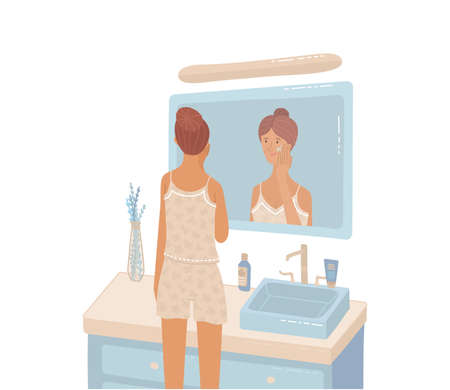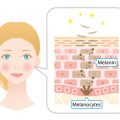Introduction: Setting the Record Straight on Radiofrequency Skin Tightening
Radiofrequency (RF) skin tightening has rapidly gained traction across the UK, finding its place in the beauty routines of everyone from London professionals to retirees in the Cotswolds. As a non-surgical treatment promising firmer and more youthful-looking skin, it offers an appealing alternative to invasive cosmetic procedures. Yet, as RF technology becomes more mainstream, so too does the swirl of misinformation and myths that surround it. From exaggerated claims about miraculous results to misplaced worries over safety, confusion often leaves many Brits unsure whether this treatment is right for them. In this article, we’ll cut through the noise and separate fact from fiction, ensuring you have the clear, evidence-based guidance needed to make informed decisions about radiofrequency skin tightening.
2. Myth vs Reality: How Radiofrequency Actually Works
Radiofrequency (RF) skin tightening has become a buzzword across Britain, but it’s often shrouded in misconceptions. To make informed decisions, it’s crucial to understand how RF truly works on a scientific level and what actually happens beneath the surface of the skin.
The Science Behind RF Skin Tightening
RF skin tightening relies on the application of controlled radiofrequency energy to heat the deeper layers of the skin (the dermis). This process stimulates the body’s natural collagen and elastin production, two key proteins responsible for skin firmness and elasticity. The treatment is non-invasive, meaning there are no needles or incisions involved.
Common Misconceptions Debunked
| Myth | Reality |
|---|---|
| RF treatments burn or damage the skin surface | Modern RF devices in UK clinics are designed with safety features that protect the epidermis, focusing heat only on targeted deeper tissues. |
| Results are instant and permanent | While some immediate tightening can occur due to tissue contraction, optimal results develop gradually over weeks as collagen remodelling takes place. Maintenance sessions are recommended. |
| RF is unsafe or unregulated in Britain | Reputable UK clinics use CE-marked devices and follow strict regulations set by the Care Quality Commission (CQC) and other authorities, ensuring safety and efficacy. |
The Core Technology Used in British Clinics
Across Britain, clinics utilise advanced monopolar, bipolar, or multipolar RF devices. These machines deliver precise energy levels tailored to individual skin types and concerns. Many systems incorporate cooling mechanisms or temperature sensors to guarantee patient comfort and prevent overheating.
Conclusion: Understanding Matters
By demystifying how radiofrequency works and clarifying its effects, Brits can confidently consider this technology for non-surgical skin tightening. With regulated equipment and qualified practitioners, RF treatments remain a safe and scientifically backed option throughout the UK.

3. Safety and Regulations: Understanding UK Standards
When it comes to aesthetic treatments like radiofrequency skin tightening, safety is a top priority for Brits, and rightly so. The United Kingdom has established rigorous standards to ensure that both practitioners and clinics operate under strict guidelines. Unlike some other countries where regulations may be more relaxed, British practitioners must adhere to comprehensive protocols set out by organisations such as the Care Quality Commission (CQC) and the General Medical Council (GMC). These bodies monitor everything from practitioner qualifications to equipment standards, ensuring that only those with accredited training can perform these procedures.
Before any treatment takes place, reputable clinics in the UK will always carry out a thorough consultation. This includes an assessment of your medical history, skin type, and suitability for the procedure. The use of CE-marked devices is mandatory, meaning all equipment used meets stringent EU safety and performance requirements — a standard still upheld post-Brexit. Furthermore, practitioners are required to undergo regular training and certification updates, keeping them abreast of the latest techniques and safety measures.
This robust regulatory framework provides peace of mind for anyone considering radiofrequency skin tightening. It debunks the myth that these treatments are unregulated or unsafe in Britain. By choosing a qualified practitioner working within an accredited clinic, you can be confident that every measure is taken to protect your wellbeing throughout the process.
4. Suitability for British Skin Types and Concerns
One common misconception about radiofrequency (RF) skin tightening is that it is only suitable for certain skin types or tones. However, RF technology is renowned for its versatility, making it an appealing choice for the diverse range of British complexions. In the UK, where our population represents a spectrum of skin tones—from fair to deep—understanding how RF works across these variations is crucial in dispelling myths and ensuring safe outcomes.
How Different British Skin Tones Respond to RF
Unlike some laser-based treatments that carry a risk of pigmentation changes, especially in darker skin, RF energy targets deeper layers without relying on melanin. This means that all Fitzpatrick skin types (ranging from I to VI) can typically undergo RF procedures with minimal risk of hyperpigmentation or burns. The non-invasive nature of RF makes it particularly attractive for those who have previously been excluded from other aesthetic treatments due to their skin tone.
| Skin Tone/Type | Typical Response to RF | Precautions |
|---|---|---|
| Fair (Fitzpatrick I-II) | Good collagen response, low risk of pigment issues | Avoid excessive heat to prevent redness |
| Medium (Fitzpatrick III-IV) | Consistent tightening, rare pigment changes | Monitor for mild sensitivity post-procedure |
| Darker (Fitzpatrick V-VI) | Safe application, minimal risk of hyperpigmentation | Choose reputable clinics with experience in diverse skin types |
Who Benefits Most from RF Skin Tightening?
The ideal candidates are those experiencing mild to moderate laxity—think early signs of jowling or sagging around the jawline and eyes. Individuals who wish to avoid surgical intervention yet desire noticeable improvement find RF an excellent middle ground. Additionally, Brits with busy lifestyles appreciate minimal downtime, as most people can resume normal activities immediately after treatment.
Key Considerations for British Patients:
- Mature Skin: Older adults often see the most dramatic results due to decreased collagen production naturally associated with ageing.
- Sensitive Skin: Those prone to redness or irritation should consult practitioners experienced in adjusting device settings.
- Diverse Ethnic Backgrounds: People of Asian, Afro-Caribbean, and mixed heritage can safely benefit from modern RF technology when performed by skilled professionals.
Final Thoughts on Suitability
If you’re considering RF skin tightening in the UK, rest assured that this treatment accommodates the nation’s rich variety of skin types and concerns. Consulting with a qualified practitioner ensures a bespoke approach tailored specifically to your individual needs and heritage.
5. What Results Can You Realistically Expect?
Radiofrequency (RF) skin tightening is celebrated for its ability to rejuvenate and firm the skin, but it’s important for Brits considering this treatment to have realistic expectations. Most UK-based clinics and dermatologists agree that while RF can noticeably improve skin laxity and smoothness, the results are typically subtle and natural-looking rather than dramatic or “surgical.”
Typical Outcomes
Patients generally notice a mild to moderate improvement in skin tightness and texture, especially around areas prone to sagging such as the jawline, neck, and under the eyes. According to published UK case studies, improvements usually become visible after two to four sessions, with optimal results developing over several weeks as new collagen forms.
Downtime
One of the main advantages of RF treatments is minimal downtime. Most people in the UK report mild redness or swelling immediately after a session, which typically subsides within a few hours. Unlike more invasive procedures, RF doesn’t require time off work or social activities—making it especially appealing for busy professionals.
Recommended Number of Sessions
The number of sessions required varies depending on individual skin condition and treatment goals. However, UK practitioners often recommend a course of three to six treatments, spaced about two to four weeks apart. Maintenance sessions every six to twelve months are commonly advised to sustain results.
Tempering Expectations
It’s crucial for those seeking RF skin tightening in Britain not to expect facelift-level results. The effect is gradual and cumulative, improving the skin’s firmness and elasticity without drastic transformation. UK-based case studies consistently highlight patient satisfaction when expectations are managed with honest clinical advice.
In summary, radiofrequency skin tightening offers a safe and gentle route to fresher-looking skin with minimal disruption to daily life. However, being aware of its limitations ensures you approach your treatment journey well-informed and satisfied with your results.
6. Aftercare and Longevity: Maximising Your Investment
Proper aftercare is crucial for maintaining and extending the results of your radiofrequency skin tightening treatment. For UK residents, the unpredictable weather—from brisk winds to damp drizzle—means paying special attention to skin protection post-procedure. Immediately following your session, gently cleanse your skin with a mild, fragrance-free cleanser and pat dry; avoid hot water and abrasive scrubs for at least 48 hours. Applying a high-factor SPF is essential, even during overcast British days, as UV exposure can compromise results. Hydration remains key: drink plenty of water and use a rich moisturiser suited to your skin type to lock in moisture, especially in centrally heated homes during colder months.
To maximise longevity, adopt a healthy lifestyle—this includes avoiding smoking and limiting alcohol intake, both of which accelerate skin ageing. Aim for a balanced diet rich in antioxidants and omega fatty acids, which support collagen production. Incorporate gentle facial massage or lymphatic drainage techniques if recommended by your practitioner. It’s advisable to limit strenuous exercise and saunas for the first few days post-treatment to prevent excessive sweating that could irritate treated skin.
Results from radiofrequency treatments are gradual and cumulative, typically peaking within three to six months as collagen remodelling occurs. Most Brits find that one session every three to six months helps maintain firmness, though this varies depending on age, lifestyle, and individual response. Scheduling annual consultations with your aesthetic practitioner can ensure you’re on track with maintenance and allow for timely top-ups if needed.
Ultimately, combining professional care with tailored at-home routines and sensible lifestyle choices will help you get the most from your investment in radiofrequency skin tightening—delivering smoother, firmer skin regardless of the Great British weather.
7. Conclusion: Making an Informed Choice in the UK
In summary, radiofrequency skin tightening offers a scientifically-backed solution for those seeking non-surgical skin rejuvenation. We’ve addressed common myths—such as fears about safety, effectiveness, and downtime—and clarified that this treatment, when performed by qualified practitioners using approved devices, is generally safe and delivers noticeable results. However, it’s crucial to remember that outcomes can vary based on individual skin types and expectations. As with any cosmetic procedure in the UK, Brits are strongly advised to consult only with accredited and experienced professionals who adhere to the highest standards set by regulatory bodies such as the Care Quality Commission (CQC) or the British Association of Dermatologists. Doing your homework and asking the right questions ensures both your safety and satisfaction. By staying well-informed and prioritising professional guidance, you can confidently decide if radiofrequency skin tightening aligns with your personal goals—while upholding the best of British prudence and care.


